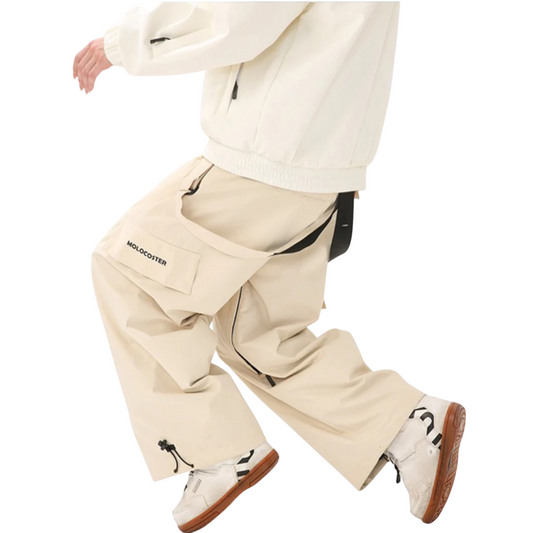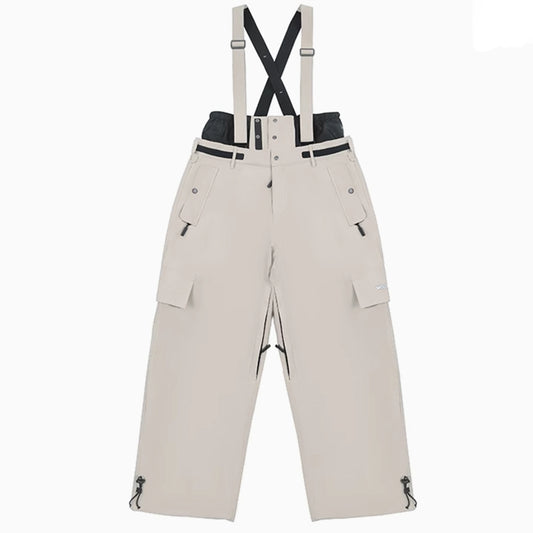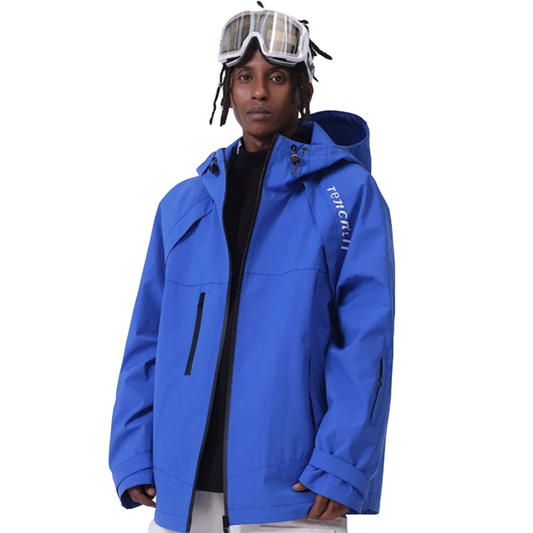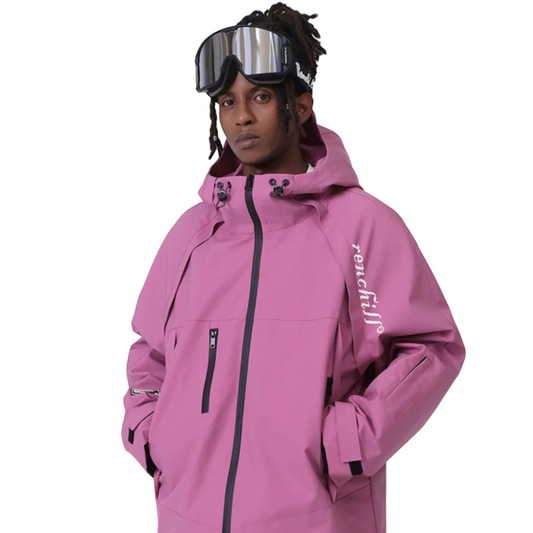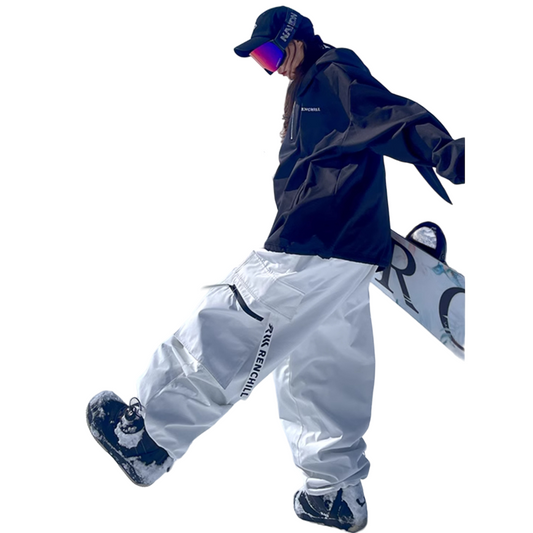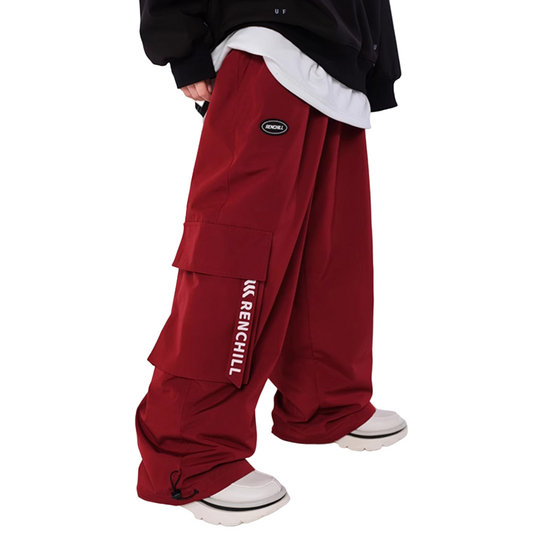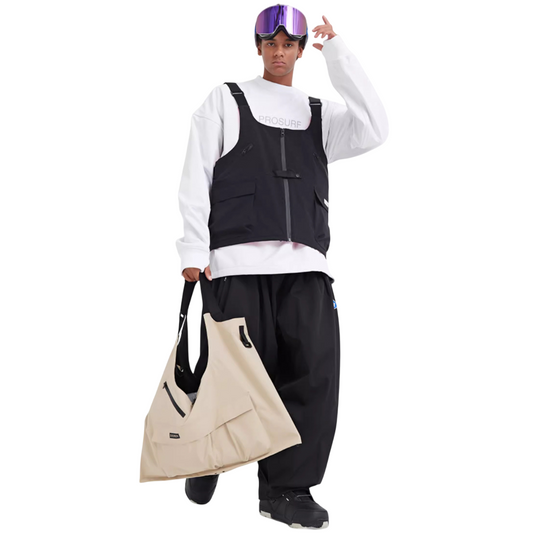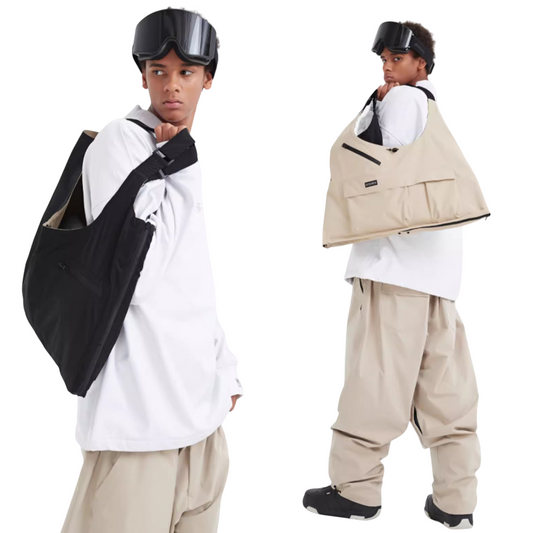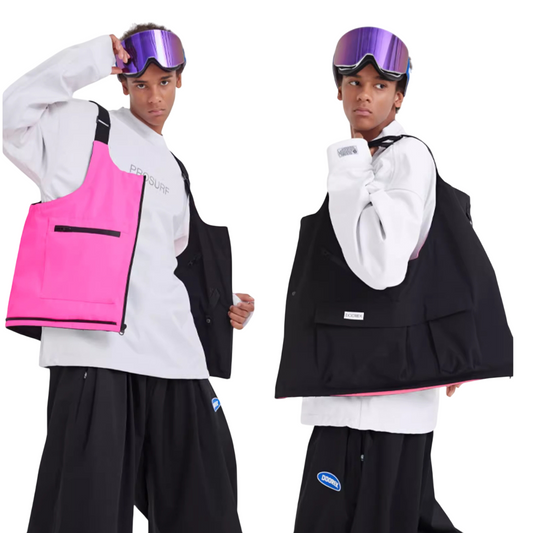If you want to know how to choose ski gloves, you need to focus on three essentials: warmth and insulation, waterproofing, and fit with dexterity. These secrets come straight from 5000 user reviews. Your ski trip gets way better when you match glove features to your conditions. Cold days call for thick insulation, but wet snow means waterproof membranes become key. SNOWMOCACA stands out as a trusted ski brand, and their Snow Suit is a favorite for ski trip outfits. Right now, you get FREE SHIPPING on orders over $99. ❄️ Stick around for actionable tips and a quick checklist at the end!
Here’s a quick look at how different ski conditions affect glove choices:
|
Skiing Condition |
Impact on Ski Glove Features |
|---|---|
|
Cold Temperature |
More insulation, mittens preferred |
|
Wet/Snowy |
Waterproof membranes, synthetic shells |
|
Warm/Spring |
Breathable gloves, removable liners |
|
Dexterity Needs |
Gloves, mittens, or three-finger styles |
Key Takeaways
- Choose ski gloves with the right insulation to stay warm; synthetic fills work best for wet or mixed weather, while down suits dry, cold days.
- Look for gloves with waterproof membranes like Gore-TEX to keep your hands dry and comfortable during skiing.
- Find gloves that fit snugly but allow finger movement; a good fit keeps your hands warm and helps you grip ski poles easily.
- Consider glove styles like mittens, gloves, or 3-finger designs to balance warmth and dexterity based on your needs.
- Pair your gloves with matching ski suits like SNOWMOCACA for the best protection and comfort on the slopes.
Warmth & Insulation
Insulation Types
When you pick out a ski glove, the type of insulation inside makes a huge difference in how warm your hands stay. Most ski gloves use synthetic insulation like PrimaLoft, EnduraLoft, or Heatseeker Eco. These materials keep your hands warm even if the glove gets wet, which is perfect for active ski days or when you’re wearing a snow set or 2 piece ski suit. Down insulation, made from goose feathers, feels super warm and light. However, down loses its warmth if it gets damp, so it works best in dry, cold weather. Synthetic insulation dries faster and keeps you comfortable in changing conditions.
Here’s a quick look at common insulation materials and their warmth:
|
Insulation Material |
Typical Thermal Weight (grams) |
Notes on Use and Warmth |
|---|---|---|
|
PrimaLoft (Gold, Silver, One, Gold Cross Core) |
100-340 g |
Lofty warmth, popular in high-end gloves |
|
EnduraLoft polyester |
133-200 g |
Moisture-resistant, used in many gloves |
|
Heatseeker Eco |
160-250 g |
Eco-friendly, synthetic insulation |
|
Wool and Fleece |
150-200 g (fleece example) |
Good as liners, less durable alone |
|
Down (600-fill GooseDown) |
N/A |
Superior warmth-to-weight, moisture sensitive |
You’ll notice that higher gram weights usually mean more warmth. Synthetic insulation is the top choice for most ski trip outfits because it balances warmth, moisture resistance, and durability.

Outer Shell Materials
The outer shell of your ski glove protects the insulation and keeps your hands safe from wind and snow. Leather shells, like cowhide or goatskin, offer great durability and grip. Cowhide is the toughest, while goatskin gives you a nice mix of toughness and flexibility. Deerskin feels soft but wears out faster. Synthetic shells are common in affordable gloves and work well with waterproof membranes, but they don’t last as long as leather.
Palm material matters, too. Leather palms give you a better grip and last longer, especially if you ski often. Synthetic palms are lighter and more waterproof but may not hold up as well over time. If you want gloves that last through many ski seasons, look for leather in the palm and shell.
User Insights
Many skiers talk about the trade-off between warmth and breathability. If your glove has heavy insulation or a waterproof membrane, your hands might sweat, which can make them feel cold later. Some users suggest gloves with removable liners or breathable materials to help manage moisture. Wool liners get praise for staying warm even when damp, while synthetic insulation sometimes causes sweaty hands that cool off quickly. Layering with a liner glove or choosing a glove with a single-layer shell can help you balance warmth and dryness.
FAQ:
How do I choose the right insulation for ski gloves?
Think about your ski conditions. Go with synthetic insulation for wet or mixed weather. Choose down for dry, cold days when you need maximum warmth.
What materials are best for warmth?
PrimaLoft and other synthetic fills are best for active skiing. Down is warmest in dry conditions, but synthetic insulation is more reliable for most ski trips.
Waterproofing & Breathability

Membrane Technologies
When you look for a ski glove, you want your hands to stay dry. That’s where a waterproof membrane comes in. The most famous membrane is Gore-Tex. It has billions of tiny pores that block water from getting in but let sweat escape. This keeps your hands dry and comfortable, even when you’re skiing hard. Other brands use membranes like CZone or OutDry. OutDry is great for high-energy activities because it breathes better. Still, no membrane is perfect. Even the best waterproof membrane can let water in during heavy rain or if the glove design has weak spots. Some glove experts say you can get good water resistance with strong outer fabrics, water-resistant leather, and good seam sealing—sometimes even without a membrane. But for most ski trips, a membrane gives you peace of mind.
|
Feature |
Description |
|---|---|
|
Waterproof Protection |
|
|
Extreme Breathability |
Tiny pores let sweat vapor escape, stopping clammy hands. |
|
Windproofing |
Blocks wind chill, helping you stay warm. |
|
Durability |
Gloves with membranes last longer in tough ski conditions. |
|
Designed for Activity |
Made for skiing and snowboarding, so you stay comfy all day. |
Breathability Factors
You want your ski glove to breathe. If it doesn’t, your hands get sweaty, then cold. Breathable membranes like Gore-Tex or Windshark let sweat out but keep snow and water away. Some gloves use 10K/10K membranes, which wick away sweat while blocking outside moisture. Linings that wick moisture and insulation like Primaloft Gold help trap heat without making your hands too hot. This combo keeps your hands dry and warm, even when you’re skiing hard or wearing waterproof snowsuits womens love. If you ski with a ski jacket mens or ski jackets women, you know how important it is to avoid clammy hands. Breathable gloves make a big difference.
- Breathable membranes let sweat escape, so your hands stay dry.
- Moisture-wicking linings stop sweat from building up.
- Good insulation keeps warmth in but doesn’t overheat your hands.
- These features work together to keep you comfortable on the slopes.
User Reviews
Skiers talk a lot about waterproofing in glove reviews. Many say cotton-backed gloves soak up water fast and lose warmth. If you don’t treat your glove with waterproofing products, it can get soggy and cold. Some users complain that knit wrists let snow sneak in, making the glove less waterproof. For long ski trips or wet days, you want a glove that keeps water out and dries quickly. Regular care, like using Nikwax or Sno-Seal, helps your glove last longer and stay dry.
FAQ:
How can I tell if ski gloves are waterproof?
Check for a water-proof membrane like Gore-TEX or OutDry. Look for taped seams and water-resistant outer fabrics.
Why is breathability important?
Breathability lets sweat escape, so your hands don’t get clammy or cold. This keeps you comfortable while skiing.
Fit & Dexterity
Sizing & Comfort
Getting the right fit for your ski glove makes a huge difference on the mountain. If your glove fits well, you stay warmer and move your fingers easily. Here are some tips to help you find the best fit:
- Your glove should feel snug but not tight. Leave about a quarter inch of fabric beyond your fingertips.
- Make sure your palm sits fully inside the cuff. This keeps your wrists covered and warm.
- When you make a fist, your glove should not feel restrictive.
- Always check the sizing chart from the manufacturer. Measure your hand’s circumference for the most accurate size.
- If you are between sizes, order both and try them on at home. Keep the tags on until you decide which one fits best.
A good fit traps warm air and keeps your hands cozy. If your glove is too tight, it can cut off circulation and make your hands cold. Loose gloves let cold air in and make it hard to grip your ski poles or zip up your best youth ski jackets. Some people size down for liner gloves to boost dexterity, but don’t go too small or you’ll lose warmth.
Cuff & Closure Systems
Cuff style matters more than you might think. Gauntlet cuffs are long and go over your jacket sleeve. They usually have a cinch at the top to seal out snow and cold. This style works great with girls snow suits or bulky jackets. Undercuff gloves stop at your wrist and give you more movement. If you pick undercuff gloves, make sure your jacket sleeve can close tightly over them. Adjustable tabs on your jacket help keep snow out and warmth in. Choose the cuff system that matches what to wear under ski jacket layers and your favorite ski gear.
3-Finger & Other Designs
You might wonder if you should pick gloves, mittens, or something in between. Gloves give you the most finger movement, which helps with tasks like buckling boots or grabbing ski poles. Mittens keep your fingers together for extra warmth, but limit dexterity. 3-finger gloves or mittens offer a smart balance. They group your fingers for warmth but leave your index finger free for better grip and control. Many skiers love this style for cold days when they still need to adjust gear or use their phone.
FAQ:
How should ski gloves fit?
Your glove should fit snugly, with a bit of space at the fingertips. Avoid gloves that are too tight or too loose.
What are the benefits of 3-finger gloves?
3-finger gloves combine the warmth of mittens with the dexterity of gloves, making them great for cold ski days when you still need to use your hands.
How to Choose Ski Gloves: SNOWMOCACA Snow Suit
Product Highlights
You want your ski trip outfit to stand out and keep you comfortable. SNOWMOCACA Snow Suit gives you plenty of choices. You can pick a 2 piece ski suit, a two piece snowsuit, or even a plus size snow suit. There are options for everyone, including men's ski suit two piece and women's ski suit two piece styles. If you love a classic look, you can find a vintage ski jacket or a retro ski jacket. SNOWMOCACA also offers a one piece womens snowsuit and snow suit set for those who want full coverage. Each suit matches perfectly with your gloves, helping you figure out how to choose ski gloves for any condition.
|
Suit Type |
Features |
Best For |
|---|---|---|
|
2 piece ski suit |
Flexibility, layering |
All-day ski trips |
|
Plus size snow suit |
Inclusive sizing |
Comfort and fit |
|
Retro ski jacket |
Unique style, warmth |
Fashion-forward skiers |
|
One piece womens snowsuit |
Full coverage, easy movement |
Cold, snowy days |
Customer Reviews
Skiers rave about SNOWMOCACA Snow Suit. Many say the fit feels just right, and the warmth keeps them on the slopes longer. One customer shared, "I wore my two piece ski suit all day and stayed dry, even after a fall in deep snow." Another review highlights the durability, "My snow suit set survived a week of tough skiing and still looks new." Parents love the youth options, and shoppers mention the womens ski jacket sale as a great way to save. You see real feedback from people who use these suits to solve how to choose ski gloves for every ski adventure.
Tip:
Pair your SNOWMOCACA suit with gloves that match your insulation and waterproofing needs. You get the best ski experience when your gear works together.
Shop & Save
You want to save money and get reliable shipping. SNOWMOCACA offers free shipping on all orders over $99. You do not need to worry about extra conditions or time limits. The offer is ongoing, so you can shop anytime. SNOWMOCACA has a 93.4% on-time shipping rate and a high perfect order rate. Your ski gear arrives quickly and in great shape. You can explore more ski suit set options, two piece ski suits, and even womens ski jacket sale deals. For more tips on how to choose ski gloves and ski outfits, check out the SNOWMOCACA blog at snowmocaca.com/blogs/news.
FAQ:
What makes SNOWMOCACA Snow Suit unique?
You get a wide range of styles, sizes, and features designed for every skier.
Are there plus size and youth options?
Yes, SNOWMOCACA offers plus size snow suits and youth sizes for all ages.
Ski Glove Buyer's Guide
Quick Checklist
Ready to pick your perfect pair? Use this ski glove buyer's guide to make sure you cover all the essentials before you hit the slopes:
- Glove Style: Decide if you want a short-cuff glove (fits under your jacket) or a long-cuff gauntlet (fits over your sleeve). Think about your usual ski conditions.
- Liner Type: Choose between removable liners for easy drying or sewn-in liners for a snug fit and better dexterity.
- Insulation: Pick the right insulation for your needs. Synthetic and wool work well for most ski days. Down is best for dry, cold weather. Skip cotton.
- Heated Gloves: Consider battery-powered heated gloves if you get cold hands easily.
- Dexterity: Make sure you can move your fingers easily. Gloves give you more movement than mittens.
- Grip: Look for soft leather palms for the best grip on ski poles.
- Mittens vs. Gloves: Mittens keep you warmer, but gloves let you do more with your hands.
- Waterproof Membrane: Check for a waterproof layer if you ski in wet or slushy conditions.
- Wrist Leashes: These help you avoid losing a glove on the lift.
- Material Choice: Leather lasts longer and grips better, while synthetic materials breathe more.
- Leather Type: Cowhide, goatskin, or deerskin each offer a different balance of softness and toughness.
Common Mistakes
Even experienced skiers make mistakes when choosing gloves. Here are the most common ones and how you can avoid them:
- Picking gloves that are too tight. This cuts off circulation and makes your fingers cold.
- Choosing gloves that are too loose. You lose grip and dexterity, and cold air sneaks in.
- Not securing the wrist properly. Snow and cold air get inside, making your hands chilly.
- Ignoring the size chart. Always measure your hand and check the chart before buying.
- Forgetting to test the fit. Make a fist, grip a ski pole, and check for comfort and movement.
- Overlooking liner compatibility. Make sure your liners fit well with your gloves.
- Choosing the wrong material for your needs. Leather is tough, but synthetic is lighter and dries faster.
Tip: Want more advice? The SNOWMOCACA blog has extra tips and stories to help you master the ski glove buyer's guide and get the most out of every ski trip. 🏂
You now know the three secrets for picking ski gloves: warmth and insulation, waterproofing, and fit with dexterity. Before your next ski trip, check this quick list:
- Pick gloves that balance warmth and dexterity for all-day comfort.
- Look for breathability, wind resistance, and touchscreen features to match your ski activity.
- Layer with liners or choose insulated gloves to handle changing ski conditions.
SNOWMOCACA Snow Suit keeps you ready for every ski adventure, and you get free shipping on orders over $99. For more ski gear tips, visit the SNOWMOCACA blog. Get out there and enjoy the slopes! 🎿
FAQ
How do I know if my ski gloves are warm enough?
Try your gloves on at home. If your hands feel cozy after a few minutes, you’re on the right track. For extra cold days, look for gloves with thick insulation or add a liner. 🧤
Can I wash my ski gloves in the washing machine?
Most ski gloves need gentle care. Hand wash them with mild soap and air dry. Machine washing can damage the insulation and waterproofing. Always check the care label first.
What should I do if my gloves get wet while skiing?
Take them off and let them dry near a heater or in a warm, dry spot. Avoid direct heat like a hair dryer. Wet gloves lose warmth fast, so pack a backup pair if you can.
Are touchscreen ski gloves worth it?
If you use your phone on the slopes, touchscreen gloves help a lot. You can text or take photos without removing your gloves. Look for gloves with touchscreen fingertips for the best results.
How often should I replace my ski gloves?
Replace your gloves when you see holes, worn palms, or if they stop keeping your hands warm and dry. Good gloves last several seasons, but heavy use wears them out faster.










